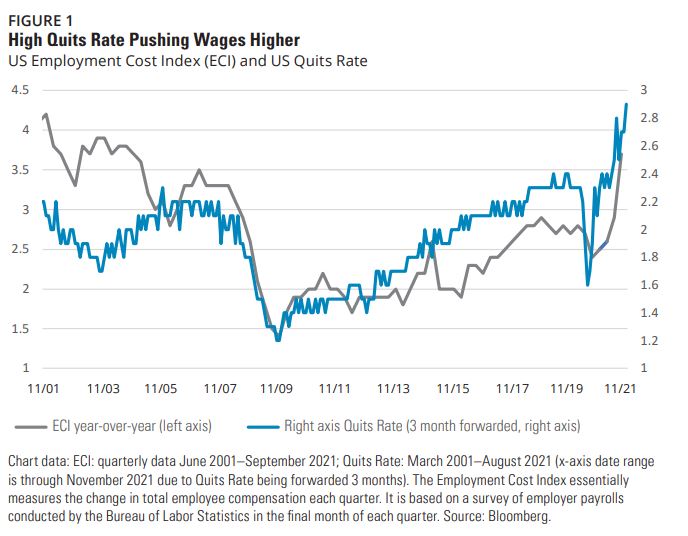
The Three Prongs of Inflation. From Hartford Funds
Supply-chain bottlenecks and disruptions are holding up inflation longer than expected;
here’s what investors need to know.
The US Federal Reserve (Fed)’s message on inflation has changed. Fed
Chairman Jerome Powell recently characterized supply-chain bottlenecks
and disruptions as “frustrating” and as “holding up inflation longer than we
had thought.” The Fed’s mea culpa is small consolation for investors whose
portfolios haven’t been positioned optimally for a longer-than-expected
period of higher inflation.
I previously said inflation would likely be stickier than the market or the
Fed anticipated. The question now is: Has inflation already peaked? In my
opinion, the short answer is no.
The Systemic Nature of Supply Shocks
Inflation is being pushed higher by three catalysts—labor, raw materials,
and transportation—that are interrelated in ways that create longer-lasting
systemic risks for the economy. I use the term systemic because of the
parallel to systemic financial risks, in which stress in one area of the market
spills over into other parts of the financial system, amplifying the initial
problem.
For example, the CEO of a computer hardware company recently told our
analysts that it wasn’t just semiconductors that were in short supply, but
also plastic, resin, copper, and steel. Then once the hardware is built, it’s
transported on container ships that are backed up at US ports. Finally, a
scarcity of truck drivers and port workers means that getting the finished
products to stores is delayed.
Thus, while some supply-chain strains may ease relatively soon, the ongoing
bottlenecks could take at least another year to resolve.
Why Supply-Chain Issues (and Inflation) Could Persist
- Labor: US wages are up 4.6% over the past year (as of September 2021)
amid a tight labor market. Indeed, FIGURE 1 shows the highest job
quits rate in 20 years, suggesting workers are confident in their ability
to find other employment. This is a good predictor of potentially even
higher wages going forward. Meanwhile, some 5 million people have left
the labor force during COVID-19, half of whom are 65 and older. Lower
immigration rates and lingering health concerns have also shrunk the
labor pool. Finally, strikes at large corporations across industries reflect
a shift in power from management to labor, which could put more
upward pressure on wages. Elsewhere, COVID-19 resurgences in Asia
shut down factories and ports, exacerbating supply challenges.

- Raw materials: The price of oil is up a stunning 80% year-to-date. Other commodity
prices, such as metals, are up around 30%. Part of the story here is demand-driven as
the global economy reopens, but there are two other contributing factors that may be
longer-lasting. First, commodity supplies are constrained due to much lower capital
expenditures and greater capital discipline after a period of overinvestment and
underdelivering to shareholders. Second, decarbonization is raising the breakeven price
at which companies can increase production economically. The result: shortages of
everything from computers to cars, canned goods, and clothing.
- Transportation: The average price to ship a 40-foot container has quadrupled over the
past year.1 Bottlenecks at temporarily shut-down seaports and a flurry of congestion at
rail terminals, warehouses, and distribution networks are extending the time it takes
to move goods from China and other Asian ports to the US. It’s also been taking a long
time just to get empty containers to where they are needed. Shortfalls may be peaking
though, as some labor conditions ease and more transportation assets come online.
- Housing: Could housing become the fourth prong of higher inflation? US home prices
are up around 20% over the past year, while rents are up around 10% nationally. Owner’s
equivalent rent (OER),2 the Consumer Price Index (CPI)3 code for “shelter costs,” is driven
by the rental market and represents 30% of core CPI. I wouldn’t be surprised to see OER
rise 4%-6% by the end of 2022, which could tack 1.2-2.0 percentage points onto inflation
over the next 12 months
CRN000000-1311243


Recent Comments